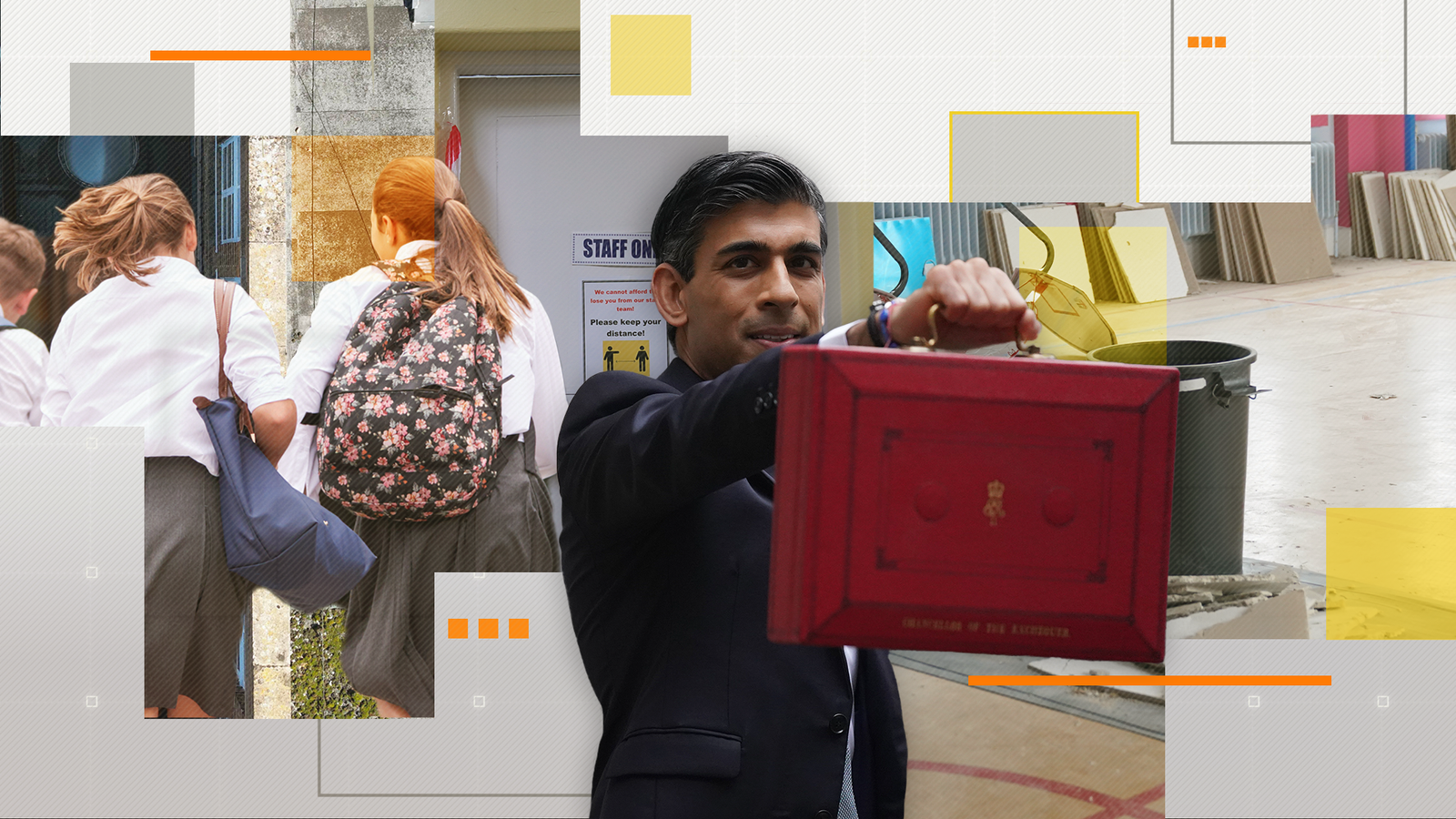Concrete crisis: Why are schools struggling to pay for repairs?


The amount of money available for schools to repair and maintain their buildings has fallen by more than a quarter since 2010 (28%), a real terms cut of £2.2bn per year.
Since the Conservatives formed a majority government in 2015, the Department for Education’s capital budget has averaged £5.6bn per year – compared with £7.8bn per year in the last four years under Labour.
That is the money earmarked for things like construction, maintenance and repair work.
More than 100 schools and colleges have been told to shut buildings, partially or completely, because of concerns about the safety of the reinforced autoclaved aerated concrete (RAAC) used to construct them.
The Prime Minister Rishi Sunak has denied suggestions that he is to blame for cuts to schools’ repair and maintenance budgets, saying it was “completely and utterly wrong” to suggest he was to blame for failing to fully fund a programme to rebuild England’s crumbling schools.
Please use Chrome browser for a more accessible video player
4:11
PM denies limiting school repairs fund
Funding for the repair and maintenance of schools has fallen significantly since 2010, when Conservative education secretary Michael Gove scrapped Labour’s Building Schools for the Future Programme.
Since then, capital spending has remained far below levels seen under Labour, dropping to just £5bn during the pandemic before rising to £5.3bn last year.
Yet the department’s overall budget has grown significantly, from an average of £72bn per year during Labour’s last four years in office to £87bn under the Conservatives, a real terms increase of 23%.
The entirety of that increase has gone into the department’s fund for day-to-day spending, its resource budget, which has received an £18bn boost. At the same time, the capital budget has been cut by £2.2bn.
As a result, many schools in need of funding for repairs and maintenance have been raiding their resource budgets, which are used to pay salaries and energy bills, to fund capital projects.
A report released in June by the National Audit Office found that, in 2021-22, 71% of academy trusts used resource funding for capital projects, transferring a total of £518m from their day-to-day running costs – despite growing pressure on teachers’ pay and rising energy bills.
“The government’s own analysis shows that the school estate is in a very poor state of repair – that includes ceilings and concrete, but it also includes gas and electric,” says Luke Sibieta, a research fellow at the Institute for Fiscal Studies.
“Those sorts of issues can become urgent, so it’s not surprising at all to be seeing schools raiding their day-to-day budgets to spend on capital budgets – those capital expenditures may well be urgent.”
Schools’ electrical and plumbing systems are also in urgent need of repair
The report by the National Audit Office found, based on data from 2020, that schools required £8.5bn of repairs for issues “key to the building remaining usable and safe”, as well as £425m for things that “could present major issues”.
Among the most serious items were £2.5bn of repairs needed to schools’ electrical services, and £2.1bn to mechanical services such as plumbing.
Within the capital budget, the money ring-fenced specifically for maintenance and repairs has also fallen significantly in recent years.
The Department for Education spent £5bn on maintenance and repairs in the two years to March. Accounting for inflation in the construction sector, that is a drop of 20% compared with the two years to March 2017.
“It’s not surprising that we’re seeing a crisis in school repairs and school maintenance,” says Mr Sibieta.
“The government has been underinvesting in school repairs and maintenance for around 10-15 years now. The amount of spending falls short of what the government itself thinks it needs.
“As part of the spending review in 2020, the Department for Education thought we needed around £5.3bn per year just to repair and maintain the existing school estate. In the end, the Treasury allocated around £3bn per year.”
Also known as ‘bubbly’ concrete, reinforced autoclaved aerated concrete (RAAC) is a building material that was popular in the post-war period as a cheap, lightweight alternative to traditional concrete mixes. It was used in UK public buildings from the 1950s to the 1990s, mostly in roofing.
Its convenience came at a cost, however, as the material was found to be less durable than ‘traditional’ reinforced concrete and is prone to crumbling and cracking, especially after exposure to moisture.
Failures in RAAC roof panels started to become apparent in the 1980s, and a string of reports identified its weaknesses and short 30-year lifespan.
The issue reignited in 2018, when a Kent school roof containing RAAC collapsed, although no one was injured.
Then this summer, an RAAC beam previously thought to be low risk collapsed, leading the government to label all buildings containing RAAC potentially dangerous and order the closure of classrooms in hundreds of schools.
Sarah Skinner, chief executive of the Penrose Learning Trust, has been forced to close 12 classrooms at Surrey’s East Bergholt High School due to the presence of RAAC.
She has secured six temporary replacements, but hasn’t been told when they’ll be available.
Click to subscribe to the Sky News Daily wherever you get your podcasts
“Once we get the porta cabins, we will get children back, but they won’t have specialist resourcing,” she says.
“We think it will be months before the remedial works can be undertaken – at a huge cost. So, I am worried about getting children back in classrooms before Christmas.”
The Data and Forensics team is a multi-skilled unit dedicated to providing transparent journalism from Sky News. We gather, analyse and visualise data to tell data-driven stories. We combine traditional reporting skills with advanced analysis of satellite images, social media and other open source information. Through multimedia storytelling we aim to better explain the world while also showing how our journalism is done.